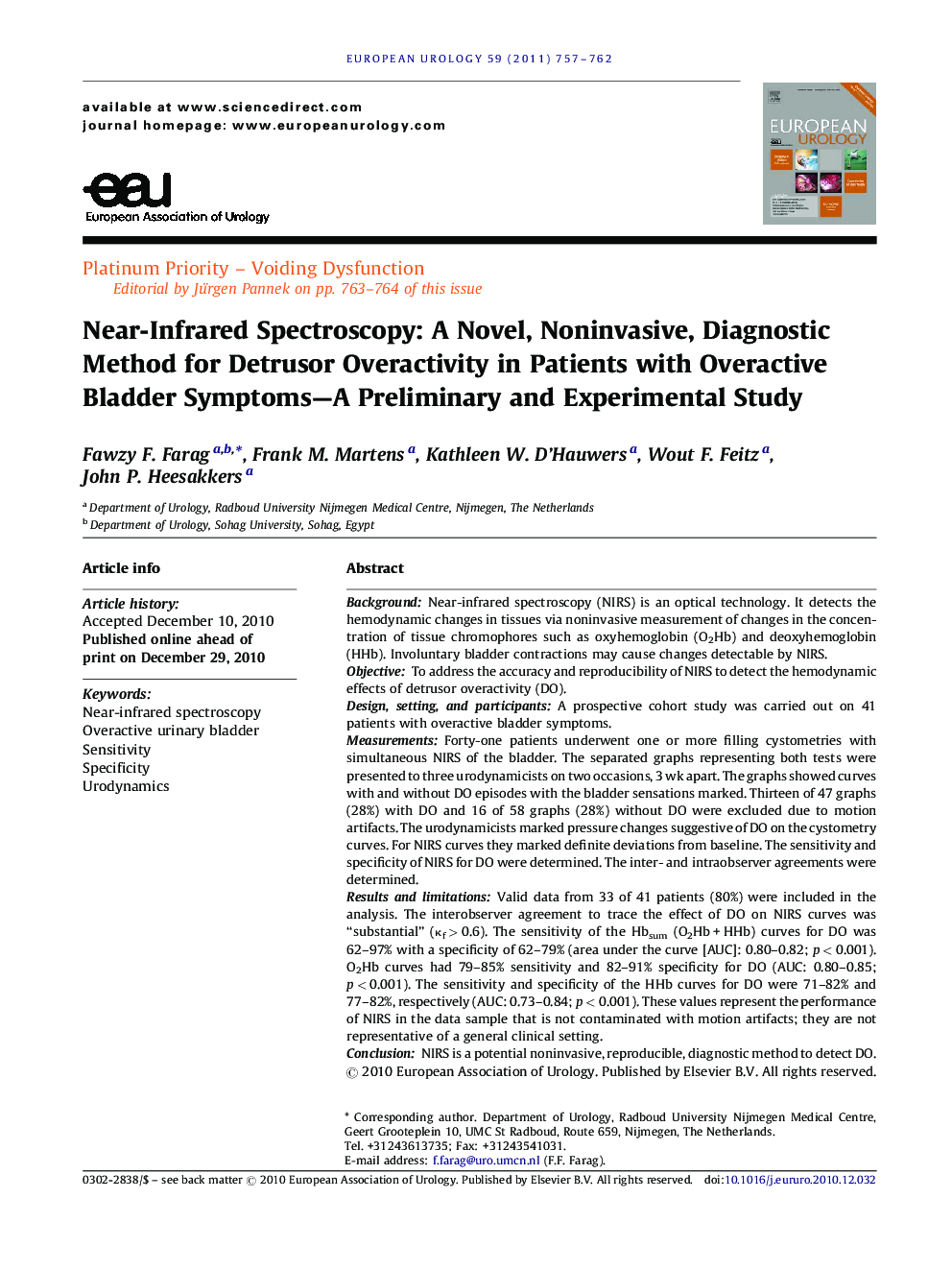| کد مقاله | کد نشریه | سال انتشار | مقاله انگلیسی | نسخه تمام متن |
|---|---|---|---|---|
| 3927337 | 1253174 | 2011 | 6 صفحه PDF | دانلود رایگان |

BackgroundNear-infrared spectroscopy (NIRS) is an optical technology. It detects the hemodynamic changes in tissues via noninvasive measurement of changes in the concentration of tissue chromophores such as oxyhemoglobin (O2Hb) and deoxyhemoglobin (HHb). Involuntary bladder contractions may cause changes detectable by NIRS.ObjectiveTo address the accuracy and reproducibility of NIRS to detect the hemodynamic effects of detrusor overactivity (DO).Design, setting, and participantsA prospective cohort study was carried out on 41 patients with overactive bladder symptoms.MeasurementsForty-one patients underwent one or more filling cystometries with simultaneous NIRS of the bladder. The separated graphs representing both tests were presented to three urodynamicists on two occasions, 3 wk apart. The graphs showed curves with and without DO episodes with the bladder sensations marked. Thirteen of 47 graphs (28%) with DO and 16 of 58 graphs (28%) without DO were excluded due to motion artifacts. The urodynamicists marked pressure changes suggestive of DO on the cystometry curves. For NIRS curves they marked definite deviations from baseline. The sensitivity and specificity of NIRS for DO were determined. The inter- and intraobserver agreements were determined.Results and limitationsValid data from 33 of 41 patients (80%) were included in the analysis. The interobserver agreement to trace the effect of DO on NIRS curves was “substantial” (κf > 0.6). The sensitivity of the Hbsum (O2Hb + HHb) curves for DO was 62–97% with a specificity of 62–79% (area under the curve [AUC]: 0.80–0.82; p < 0.001). O2Hb curves had 79–85% sensitivity and 82–91% specificity for DO (AUC: 0.80–0.85; p < 0.001). The sensitivity and specificity of the HHb curves for DO were 71–82% and 77–82%, respectively (AUC: 0.73–0.84; p < 0.001). These values represent the performance of NIRS in the data sample that is not contaminated with motion artifacts; they are not representative of a general clinical setting.ConclusionNIRS is a potential noninvasive, reproducible, diagnostic method to detect DO.
Journal: European Urology - Volume 59, Issue 5, May 2011, Pages 757–762